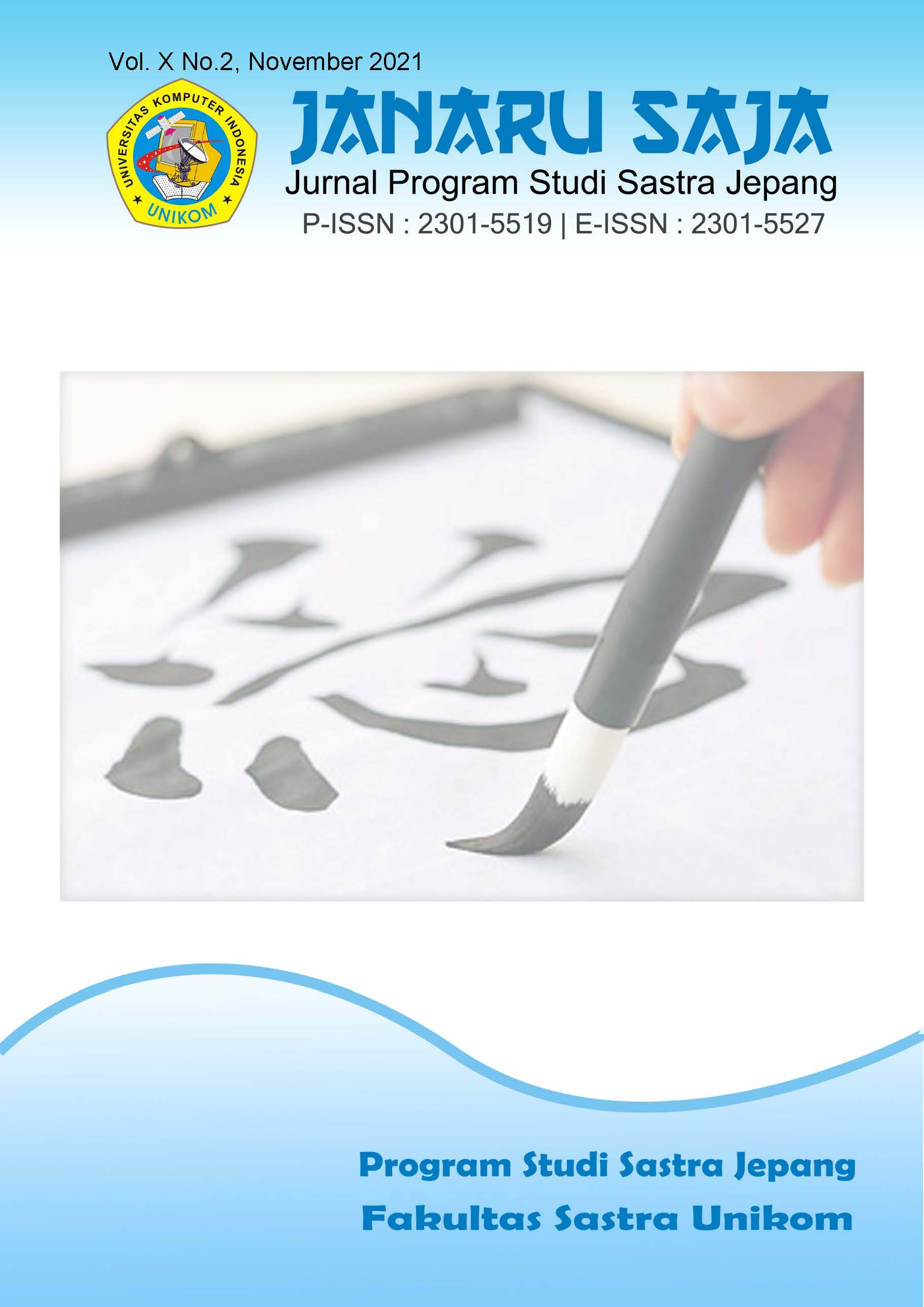Representasi Kawaii dan Omotenashi pada Yuru-kyara Prefektur Nara
DOI:
https://doi.org/10.34010/js.v10i2.5190Abstract
Abstract
Yuru-chara is one of a type of mascot in Japan that aims to promote local government events, revitalization of villages/cities/provinces, and government institutions. The purpose of this study is to describe the denotative and connotative meanings of yuru-chara from Nara Prefecture, and to interpret the representation of the kawaii and omotenashi concepts contained in the yuru-chara. This research is qualitative interpretive research using library research as a methods of data collection. The data in this study were pictures and photos of yuru-chara Sento kun, Manto kun, Na-ra chan, Renka chan, Narakkii and Nakkyon which were then analyzed using Roland Barthes' semiotic analysis. The results of data analysis show that in every yuru-chara of Nara Prefecture that has been analyzed, there are denotative and connotative meanings that are closely related to the elements of the brand that created the yuru-chara because it’s uses as a promotional media (promotional characters). The representation of the kawaii concept in yuru-kyara is a way to attract people's attention. Omotenashi maintains the collaboration between the brand and the community as well as an image of the friendly culture of Japanese society.
Keywords: Kawaii, omotenashi, Roland Barthes’ semiotics, Yuru-chara
Abstrak
Yuru-kyara merupakan salah satu jenis maskot di Jepang yang bertujuan untuk mempromosikan baik acara pemerintahan daerah, revitalisasi desa/kota/provinsi, maupun lembaga/instansi pemerintahan. Tujuan penelitian ini yaitu untuk mendeskripsikan makna denotasi dan konotasi dari yuru-kyara Prefektur Nara, serta menginterpretasikan bagaimana representasi dari konsep kawaii dan omotenashi yang terdapat pada yuru-kyara tersebut. Penelitian ini merupakan penelitian interpretatif kualitatif dengan metode pengumpulan data dilakukan dengan metode studi pustaka. Data dalam penelitian ini berupa gambar dan foto dari yuru-kyara Sento kun, Manto kun, Na-ra chan, Renka chan, Narakkii dan Nakkyon yang kemudian masing-masing dianalisis menggunakan analisis semiotika Roland Barthes. Hasil analisis data menunjukkan bahwa pada setiap yuru-kyara Prefektur Nara yang telah dianalisis, terdapat makna denotasi dan konotasi yang berkaitan erat dengan unsur-unsur dari brand yang menciptakan yuru-kyara tersebut karena Ia berperan sebagai media promosi (promotional characters). Representasi konsep kawaii pada yuru-kyara merupakan sebuah cara untuk dapat memikat perhatian masyarakat. Omotenashi menjaga kerjasama antara brand dengan masyarakat serta sebagai gambaran budaya masyarakat Jepang yang ramah-tamah.
Kata kunci: Kawaii, omotenashi, semiotika Roland Barthes, Yuru-kyara
Downloads
Published
Issue
Section
License
- Authors retain copyright and grant the journal right of first publication with the work simultaneously licensed under a Creative Commons Attribution License that allows others to share the work with an acknowledgement of the work's authorship and initial publication in this journal.
- Authors are able to enter into separate, additional contractual arrangements for the non-exclusive distribution of the journal's published version of the work (e.g., post it to an institutional repository or publish it in a book), with an acknowledgement of its initial publication in this journal.
- Authors are permitted and encouraged to post their work online (e.g., in institutional repositories or on their website) prior to and during the submission process, as it can lead to productive exchanges, as well as earlier and greater citation of published work (See The Effect of Open Access)











.jpg)

